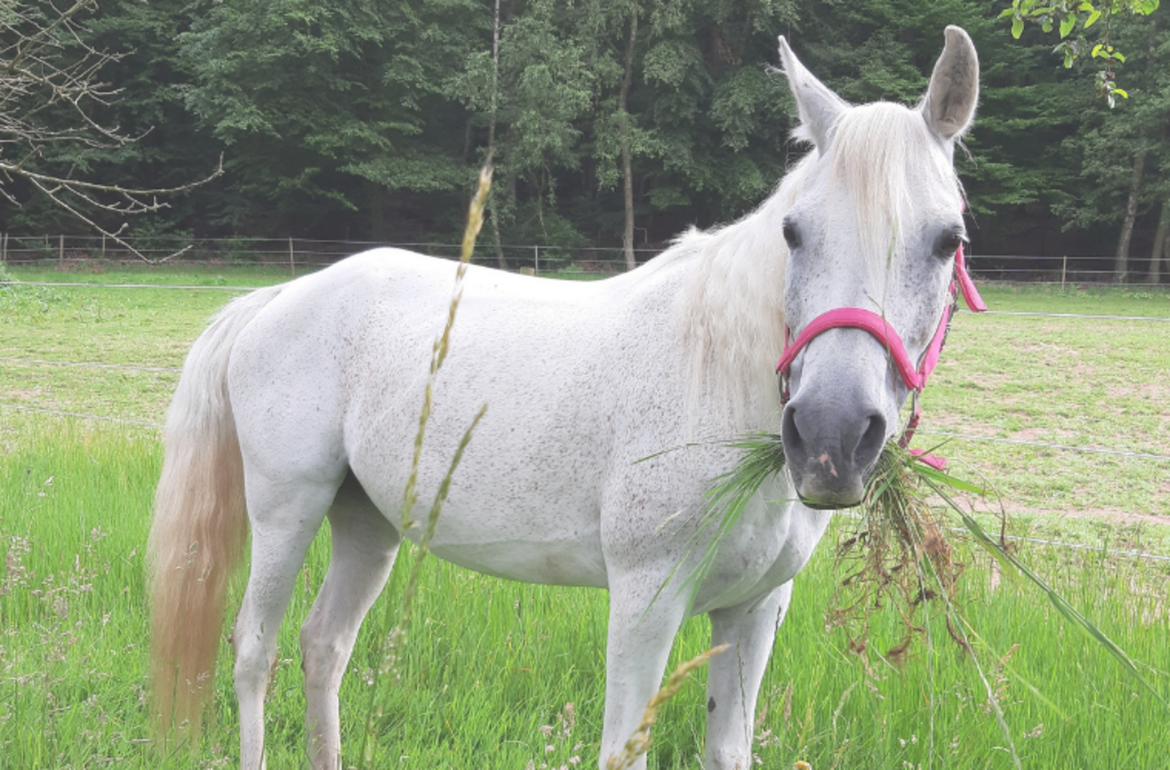Life as a Horse with Eczema
My life with sweet itch
The personal experience of Myriam Mouget
For 5 years now I have been a product manager at “Stiefel” and I am thus lucky enough to combine my passion for horses with my job. Sweet itch is one of the many recurrent topics of discussion here and is very important to me personally. I think very few of you know that my mare Asima, who has been with me for over 13 years, has eczema.
There are already so many reports on the subject of sweet itch: what is it? What triggers it? What helps? What doesn’t? But I don't want to write anything about that today. I would much rather tell you about my very personal experience with what living with sweet itch is like and how Asima and I usually get through the summer.
My first experience with sweet itch
I was exposed to it very early in my life when I was around eight years old. My pony at the time suffered terribly from it - ripped off mane, open wounds on shoulders, tail and ears. At that time it was not easy to find reliable information because the internet was not as well established. Sweet itch was something people had heard about, but it was not well understood. I don't remember much, only that our vet was able to remedy the situation with autologous blood treatment. But what I remember clearly to this day is that my pony suffered a lot and at times I wasn't allowed to ride because she had so many open wounds (not easy for a little girl to accept, of course).
A little over 12 years later, Arab mare Asima, then only two years old, moved into my stable. It is important to note here that Asima was in a poorly maintained stable and was a fearful horse. In short: She didn't trust people, only knew how to run away and was afraid of EVERYTHING, including her own shadow, all objects, the halter and of course people. Thankfully she wasn't afraid of other horses and with the enormous support of my harmonious herd, we were able to convince Asima that we humans are not that bad after all.
It quickly became clear, however, that Asima had some health issues, which were probably due to malnutrition. Among other things, she also suffered from sweet itch, which of course raised alarm bells for me, because I didn't want to go through that again. Autologous blood therapy was out of the question at the time, as Asima could hardly be touched and regular injections would simply not have been possible.
Researching and experimentation
I then started scouring the Internet and soaked up all the information I could find on sweet itch. I quickly established that Asima had a lot of sebum in her fur - running your hand once over her fur would turn it black. In addition, Asima did not sweat - never! - no matter how hard she ran in the paddock (unfortunately often in a very panicked state at first). After further research, I came across the connection between skin and liver with sweet itch. It's a very complex subject. In a nutshell: The liver is the body's main organ for detoxification and the skin is the next largest. When the liver is not able to detoxify the body as it should, the skin has to take over and it gets quickly overwhelmed. Exactly this could be seen happening in Asima. Her skin was overwhelmed, didn't function properly and couldn't sweat anymore. I then bought a special feed that promised to stimulate liver activity. But Asima was unfamiliar with food in pellet form and did not want to eat the food at first. Only when my mother's mare showed her that it tasted really delicious did Asima start eating it too.
After that, I did an intestinal regimen with psyllium seeds, which also had a fantastic effect. After the liver and intestinal treatment, I was actually able to see quick improvement: the sebum content in her fur normalised and Asima finally started to sweat. I saw this as a breakthrough and the first milestone in the fight against sweet itch.
In the first year, I was not able to take any further measures against sweet itch apart from giving her special feed. Rubbing in, spraying, washing or even putting on a blanket was still unthinkable. The first year passed with bloody ear tips and open wounds on the mane crest and tail. Nevertheless, I stuck to my strategy "healthy liver + healthy intestines = basis for healthy and strong skin" and continued to read up extensively about sweet itch.
Over the next few years, I was able to get Asima to slowly trust me. I tried bribing her with many different treats. I think many of you will recognise that and sympathise! I tried everything - from cheap to expensive, from shop-bought products to carefully homemade ones. Asima endured it all but hated it (and so did my wallet). I was also able to put an eczema blanket on her in the meantime, although she didn't like it.
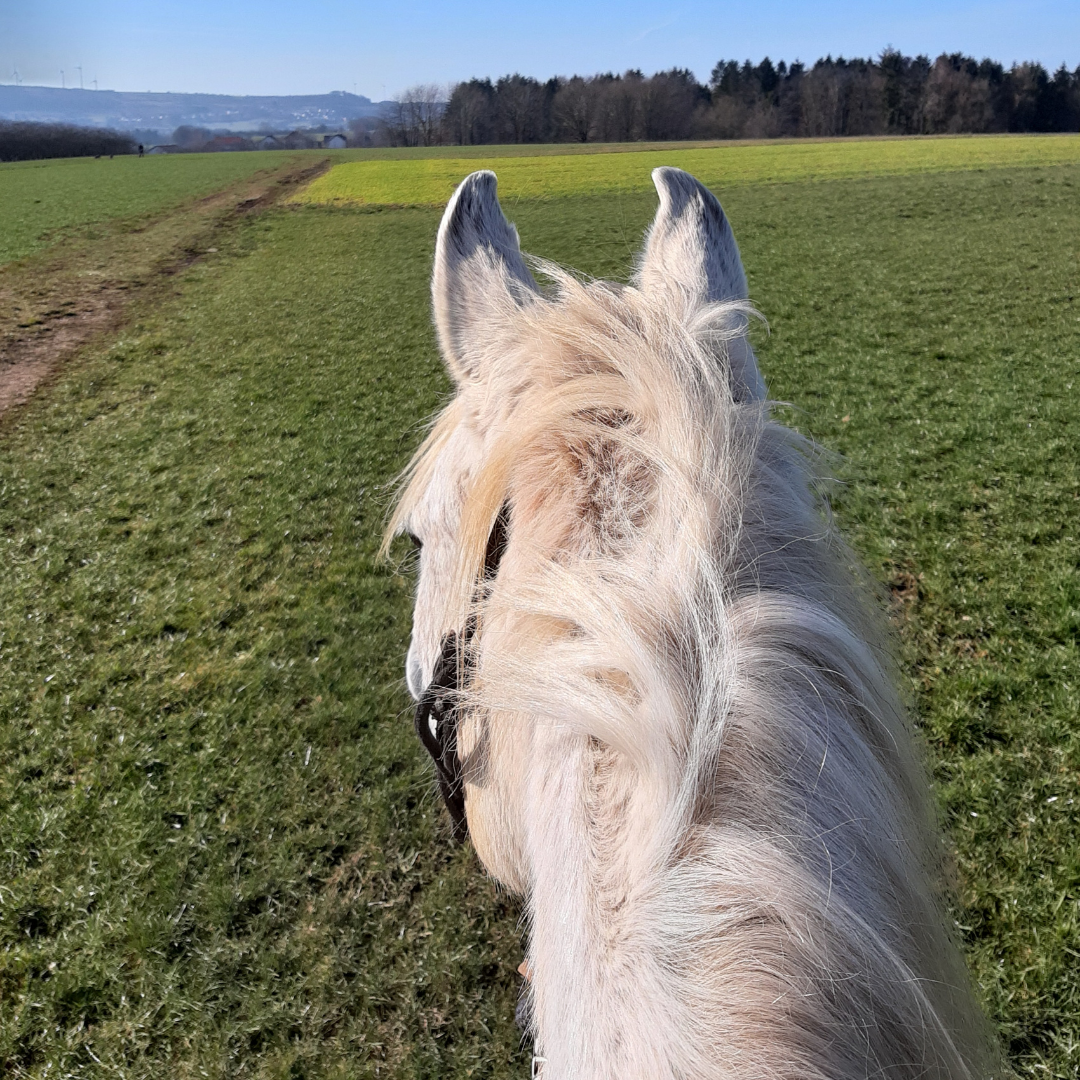
Switching to a grain-free diet
In addition, I tried new strategies with her diet and finally came to the conclusion that grain-free forage is the best solution for Asima. After switching to a completely grain-free diet, I quickly noticed a little improvement. We got through the following summers without dramatic improvements, but I could still see small changes and improvements every summer because I kept getting more information and trying out many things. I viewed every improvement, no matter how small, as a success and knew that we were on the right track.
A friend started her apprenticeship as an animal healer and she brought up the subject of a kidney cure. She put together a herbal mixture for me, which consisted of many individual herbs (unfortunately, making it was quite labour-intensive). I then switched the liver cure from pellets to pure herbs as well.
Taking care of my horse Asima
So this is how our yearly schedule would be like: before the coat change in spring and autumn, a liver-kidney-intestinal treatment; from May to August a blanket with a part for the neck too, a lot of rubbing in (I was not enthusiastic about that) and no grain and no treats because of the high sugar content. By the way, washing was never important for us because Asima, as an Arab, thinks water is absolutely terrible. When it rains, she is the first to run into the stable as soon as even a drop of water hits her body. And since I didn't want to burden our relationship anymore with things that were really unpleasant for her, I tried to wash her as little as possible.
First experience with Stiefel
I discovered the Stiefel brand at Equitana around seven years ago: I had heard about them but had never had any experience with their variety of products. I was thrilled to see their large selection and immediately asked for advice. Best of all I was pleased that they offered almost the same herbal mixture that I always laboriously mixed together myself. By chance, I found out there that the company is based practically down the road from me. Excited to find these new Stiefel products I started using their herbal mixes and now I have also added products for the immune system (mostly black cumin oil as a cure) and zinc for the skin. I also discovered the MSM (as an all-rounder, now my absolute favourite product).
My efforts paid off and it actually got better from year to year (with a few exceptions). But I'm not going to gloss over it: it was hard work. I always had to stay on my toes and wasn't allowed to let my anti-sweet itch measures slip. Asima developed excellently in all areas. Her fur was shiny as never before. There were only a few bloody spots on the tail and ears where the mane crest used to be extremely badly affected. She rubbed her mane, but not quite as much as she used to and for the first time ever, the forelock also retained long strands.
Shortly afterwards I stumbled across a job opening at Stiefel, applied and was hired. As a product manager I was allowed to try out products that I hadn't used before. From the beginning, it was important for me to be familiar with the products that I recommend. Since I had never dared to use the Eczem Protect lotion before, this was the first product I chose to test. I was very skeptical because I had yet to find the perfect product. And like I said, Asima is not a fan of products on her skin (did I mention her nickname is princess?!). But to my surprise, she actually thinks the Stiefel Eczem Protect lotion is really good. I can apply it on her without any problems and it seems to do her good because she never tries to scratch herself again afterwards - in contrast to other eczema products. Above all, I'm glad that the skin doesn't stay greasy because the lotion is absorbed completely. And thus - finally! - I found the perfect product against sweet itch for Asima.
My conclusion
Over the years I have learned and accepted that there is no cure for sweet itch, but the symptoms can be contained and alleviated. Of course, you shouldn't expect it to go away overnight or that it is enough if you do something about it every few weeks. You have to watch closely and celebrate the small successes. Yes, it's a long way and yes, it is very time-consuming, but when I grab hold of Asima's long, thick mane today, I'm just very happy that she is doing so well.
I would like to offer a few words of encouragement here: Don't bury your head in the sand and think it will go away. Keep trying. Very important: listen to your horse! It's worth it. Asima and I also had our ups and downs, but in the end, I am glad that we made our way together.
If you would like to find out more or would like a personal consultation, please get in touch: info@stiefel-net.de
Best wishes,
Your Stiefelette Myriam with Princess Asima
Latest reviews
-
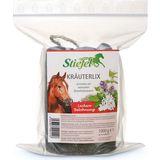 4.8 (10)
4.8 (10)Stiefel Kräuterlix Horse Lick, 1 kg
- Lick stone with bronchial herbs
- A tasty reward
- With attached cord to tie it up
£13.33 (£13.33 / kg)Delivery by December 31
-
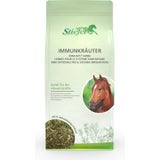 5.0 (7)
5.0 (7)Stiefel Immunity Herbs , 1 kg
Bestseller- 100% natural herbal mixture
- Immunity herbs
- Good for the body's defences
£22.27 (£22.27 / kg)Delivery by December 31
-
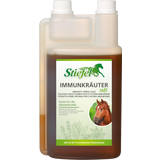 4.8 (6)
4.8 (6)Stiefel Immunity Herbal Liquid, 1 l
New!- To support the immune system
- Made of 100% natural herbs
- No added sugar
£15.12 (£15.12 / l)Delivery by December 31
-
Great Britain: Free standard delivery from £79.90
-
Free
returns Secure payments
with SSL encryption technology

